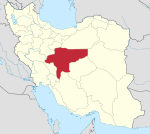| Saru Taqi Mosque | |
|---|---|
| Religion | |
| Affiliation | Shia Islam |
| Province | Isfahan Province |
| Location | |
| Location | Isfahan, Iran |
| Geographic coordinates | 32°40′04″N51°40′04″E / 32.667839°N 51.667644°E |
| Architecture | |
| Type | Mosque |
| Completed | Safavid dynasty |
The Ali Gholi Agha Mosque is a mosque in Isfahan, Iran, built by Ali Gholi Agha, who also built the Ali Gholi Agha hammam. [1] [2] [3]

